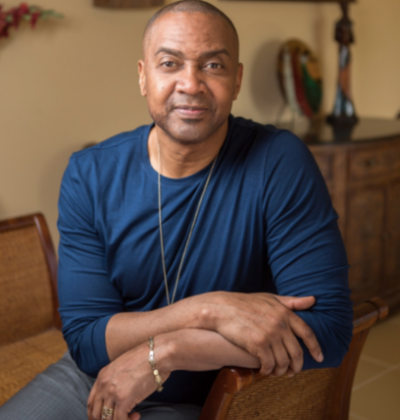Healing Ancestral Trauma to Heal Our Democracies
By Rabbi Tirzah Firestone and Resmaa Menakem
 As we approach the first anniversary of COVID lockdowns around the world, the possibility of accessing vaccines brings some relief after a year of civil, economic, and racial upheaval. Here in the U.S., as we embark on a more hopeful era under the Biden-Harris administration, we look ahead for ways to put an end to the “uncivil war” that came to a violent head on January 6.
As we approach the first anniversary of COVID lockdowns around the world, the possibility of accessing vaccines brings some relief after a year of civil, economic, and racial upheaval. Here in the U.S., as we embark on a more hopeful era under the Biden-Harris administration, we look ahead for ways to put an end to the “uncivil war” that came to a violent head on January 6.
For many Black, Jewish, and Indigenous people, the sounds and sights of the U.S. Capitol insurrection were all too familiar. They elicited deeply imprinted cellular memories of lynchings and murderous hunts — echoes of our peoples’ respective histories.
 The roaring masses who barreled into the Capitol flaunted symbols and regalia common to the scenes of crimes we suffered for generations: Confederate flags, nooses and gallows, white power hand signals, insignias proclaiming 6MWE (an acronym for “Six Million Wasn’t Enough”), and a sweatshirt emblazoned with “Camp Auschwitz.”
The roaring masses who barreled into the Capitol flaunted symbols and regalia common to the scenes of crimes we suffered for generations: Confederate flags, nooses and gallows, white power hand signals, insignias proclaiming 6MWE (an acronym for “Six Million Wasn’t Enough”), and a sweatshirt emblazoned with “Camp Auschwitz.”
These were references to history, but they were also overt signs of racialized and religionized trauma that have festered inside American bodies for more than four centuries. These unhealed wounds have been passed down, from body to body, from generation to generation.
It’s not hard to see how racial and religious trauma lives in bodies that are Black, Brown, Indigenous, Asian, Jewish, and Muslim. Throughout American history, White bodies have been deemed the normative American body. But this is rapidly changing. America is becoming more colorful, more diverse. And this fact highlights the strain on White bodies who harbor their own fears, stories of injustice, and past wounds.
Throughout U.S. history, White bodies have colonized, oppressed, and brutalized Black and Indigenous bodies, and, later, Asian, Muslim, and Jewish ones.* But well before 1776, when the U.S. became a nation, powerful White elites colonized, oppressed, and brutalized less powerful Whites — first in Europe, then on the American continent. Many White bodies still bear the vestiges of this unprocessed brutality, and the effects of their unhealed trauma still reverberate in our society today.
Recent studies in neuropsychology and epigenetics demonstrate that extreme life stresses can be transmitted to later generations by means of gene expression. That means that the residues of unmetabolized violence, poverty, and discrimination in one generation can compromise the next generation’s capacity to withstand stress, and live peaceful, non-reactive lives.
Ultimately, trauma — whether the result of our own life circumstances or that of our forebears — lands in our bodies. And the body typically responds to traumatic events in any of five forms: fight, flight, freeze, fawn, or annihilate. Videos of the assault on Congress, for example, show many of the Capitol insurrectionists in fight or annihilate mode. And one might say that in the chambers of Congress, those House and Senate members who refused to certify the presidential election despite evidence went into fawning mode, for the former president who had incited the violence. But neither evidence nor logic matter when people’s emotional brains are activated, making reasoning with them in that state fruitless.
At this transitional moment, when our hearts are open to the grief of our collective losses yet hopeful for positive change, we can begin to do the crucial work of healing the racial and religious traumas that have been left to fester beneath the surface of our society. We must bravely face our societies’ past of inflicting pain on Black, Indigenous, People of Color, and religious minorities. When we allow ourselves to experience all that is stored within us and metabolize it, what gets cracked open can illuminate our next steps and new possibilities.
*Jews who have White body privilege because of their light skin straddle a complex identity and must reconcile their White advantage while simultaneously finding themselves targets of anti-Semitic attacks, such as the shooting in the 2018 Pittsburgh synagogue massacre. This is but one illustration of the unavoidable tensions inherent in contextualized traumas that many Americans are navigating these days: intersecting privileges and oppressions that include spanning all forms of sexism, classism, ableism, and other targets of victimization.
Resmaa Menakem is a trauma therapist, a leader in the Somatic Abolitionist movement, and the author of the New York Times bestselling book, My Grandmother’s Hands: Racialized Trauma and the Pathway to Mending Our Hearts and Bodies .
Rabbi Tirzah Firestone, PhD, is a Jungian psychotherapist, a leader in the Jewish Renewal movement, and the author of the award-winning book, Wounds into Wisdom: Healing Intergenerational Jewish Trauma .
Attributions:
Re ancestral trauma and epigenetics (in paragraphs 2, 4, and 7): Epigenetics is the study of inheritable changes in gene expression. A landmark study demonstrating such changes in multiple generations of mice was published in 2014 by Kerry Ressler and Brian Dias ("Parental Olfactory Experience Influences Behavior and Neural Structure in Subsequent Generations," Neuroscience 12: 89-96). A year later, Rachel Yehuda published the first study to clearly show that stress can cause inheritable gene defects in humans ("Holocaust Exposure Induced Intergenerational Effects in FKBP5 Methylation," Biological Psychiatry 80, 372-80). For a more interesting and accessible read, we recommend Wounds into Wisdom by Tirzah Firestone and Olga Khazan’s article from The Atlantic, " Inherited Trauma Shapes Your Health .
The fight/flee/freeze/fawn/annihilate response has been widely studied and discussed. Here’s a recent explanation from psychologytoday.com . Some writers and researchers consider the annihilate response simply an amped-up version of the fight response. That is of course a legitimate view, but we feel it’s important to call out the distinction, just as we would call out the difference between anger and rage.
Catalyst is produced by The Shift Network to feature inspiring stories and provide information to help shift consciousness and take practical action. To receive Catalyst twice a month, sign up here.
This article appears in: 2021 Catalyst, Issue 3: Ancestral Healing Summit & Black History Month



